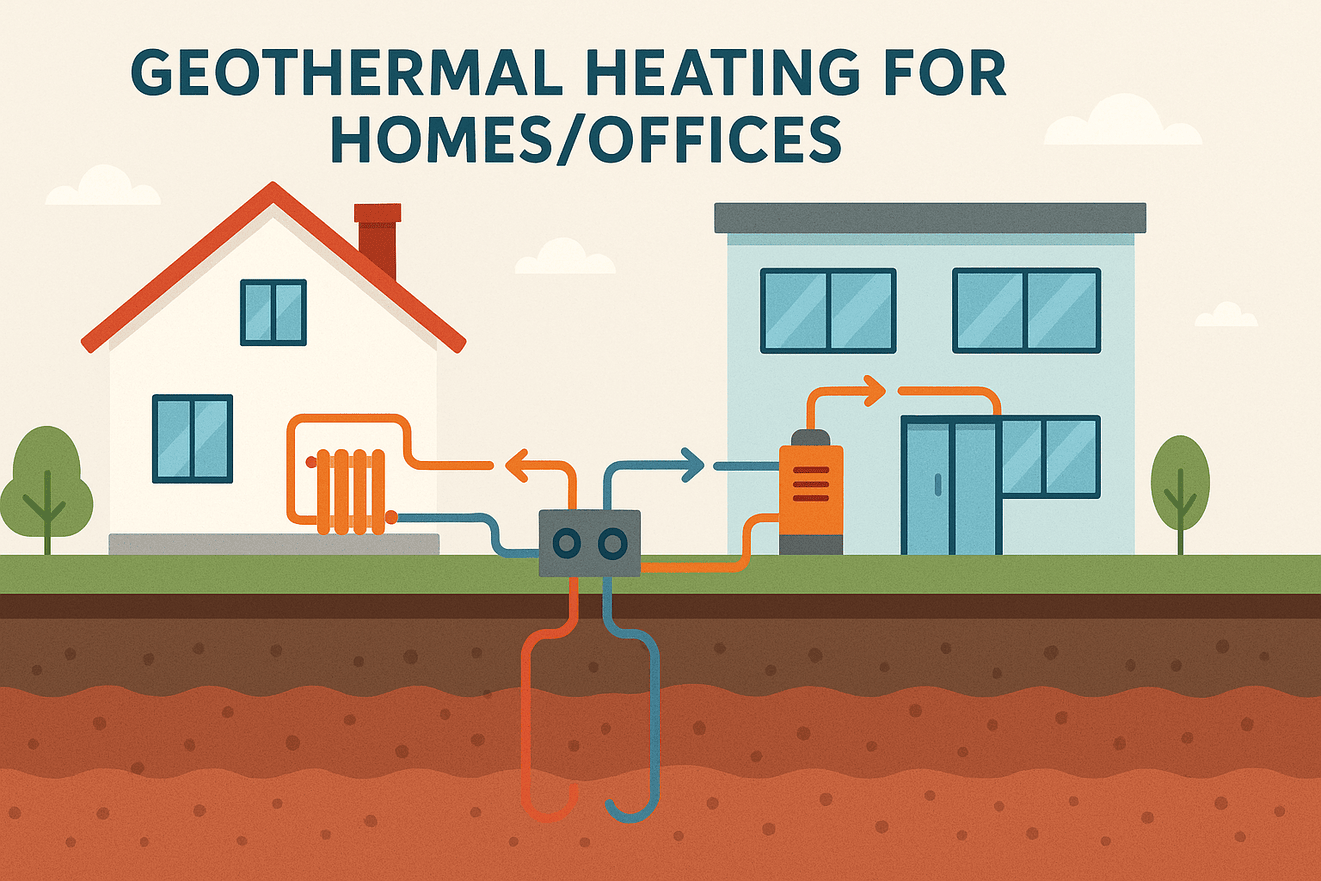Understanding Geothermal Heating Systems
Geothermal heating harnesses the Earth’s stable underground temperatures to efficiently heat and cool homes. Unlike traditional HVAC systems that rely on external air temperatures, geothermal systems extract heat from below the frost line where temperatures remain consistent year-round. This energy is transferred through a closed-loop or open-loop system using a ground source heat pump (GSHP).
Why Saskatchewan Homeowners Are Turning to Geothermal Energy
Saskatchewan, with its extreme seasonal temperature fluctuations, places a substantial burden on conventional heating and cooling systems. During the winter months, temperatures can plunge below -30°C, making energy efficiency and cost-saving solutions highly desirable. Geothermal heating offers several compelling benefits in this province:
- Stable year-round efficiency
- Significant energy savings over time
- Long-term durability and minimal maintenance
- Eco-friendly operation with zero on-site emissions
- Eligibility for government incentives and rebates
How Much Does a Geothermal System Cost in Saskatchewan?
One of the biggest concerns for homeowners is the upfront cost of installing a geothermal heating system. In Saskatchewan, the cost to install a residential geothermal system can range from $25,000 to $40,000, depending on:
- Home size and layout
- Soil and rock conditions
- Loop type (horizontal vs vertical)
- Required drilling or excavation
- Equipment and labor costs
Although the initial investment is higher than conventional HVAC systems, the long-term savings on energy bills and reduced maintenance expenses make it financially viable over time.
Government Incentives and Grants Available
The Canada Greener Homes Grant is one of the main federal programs supporting renewable energy upgrades. Eligible homeowners in Saskatchewan can receive:
- Up to $5,000 in rebates for geothermal system installation
- An additional $600 toward energy audit costs
- Potential low-interest financing through Canada’s Greener Homes Loan
On a provincial level, SaskEnergy and other local initiatives occasionally offer incentives for homeowners switching to geothermal. It’s important to stay updated on available rebates to offset upfront costs.
Energy Efficiency and Environmental Impact
Geothermal heating systems are known to be 300–600% more efficient than traditional furnaces. For every unit of electricity used, a geothermal heat pump can produce three to six units of heating or cooling. This high Coefficient of Performance (COP) makes geothermal one of the most energy-efficient systems on the market.
Environmental benefits include:
- Zero on-site carbon emissions
- Reduced dependency on fossil fuels
- Preservation of air quality
- Lower household carbon footprint
For eco-conscious homeowners in Saskatchewan, geothermal aligns with sustainable living goals without compromising on comfort.
Installation Process and Timeline
Installing a geothermal system in Saskatchewan typically involves the following steps:
- Site Evaluation & Energy Audit
An energy expert assesses the property’s current energy usage, insulation quality, and heating/cooling needs. - System Design & Loop Configuration
Engineers design the most efficient loop layout—either horizontal (more land required) or vertical (ideal for limited space). - Drilling/Excavation & Loop Installation
Depending on the loop type, drilling rigs or trenchers are used to install pipes underground. - Indoor Unit Installation
A heat pump unit is installed inside the home, replacing or supplementing the existing HVAC setup. - Testing & Commissioning
Technicians ensure the system is leak-free, calibrated, and performing optimally.
The full installation can take anywhere from 2 to 4 weeks, depending on weather conditions, equipment availability, and property layout.
Maintenance and Lifespan
One of geothermal heating’s greatest advantages is its low maintenance requirement. Unlike combustion-based systems, geothermal components have fewer moving parts and face less wear and tear.
- Ground loops can last over 50 years
- Heat pumps typically last 20–25 years
- No outdoor units mean fewer weather-related issues
Annual inspections and filter changes are usually sufficient to keep the system running efficiently. This translates into fewer repair costs and a higher return on investment over time.
Comparing Geothermal to Traditional Heating Systems
| Feature | Geothermal Heating | Gas Furnace/Boiler |
| Upfront Cost | High | Moderate to Low |
| Monthly Energy Cost | Very Low | High (variable with gas prices) |
| Lifespan | 25–50 years | 15–20 years |
| Maintenance | Minimal | Moderate to High |
| Environmental Impact | Very Low | High |
| Comfort (heating/cooling) | Consistent, even heat | Fluctuating temperatures |
Over a 10 to 15-year period, geothermal systems tend to outperform conventional options both financially and environmentally.
Suitability of Saskatchewan Soil and Climate for Geothermal
Saskatchewan’s diverse terrain—from clay to bedrock—can influence loop system design. While horizontal loops work well in rural properties with ample land, vertical systems are preferred in urban or rocky environments.
Despite cold winters, the Earth’s subsurface remains at a consistent temperature, making Saskatchewan’s climate ideal for geothermal. Once installed, the system operates regardless of seasonal temperature extremes.
Is Geothermal Heating Worth the Investment in Saskatchewan?
When evaluating long-term savings, energy independence, property value enhancement, and eco-benefits, geothermal systems present a compelling case for homeowners. While the initial costs may be intimidating, the payback period of 7–10 years and extended lifespan can make geothermal a smart, future-proof investment—especially in a province where winters can dominate the calendar.
Conclusion
Geothermal heating in Saskatchewan is more than just a green alternative—it’s a strategic, cost-effective solution for homeowners seeking consistent comfort, energy efficiency, and sustainable living. With government incentives, reduced operating costs, and virtually no environmental impact, geothermal is rapidly becoming the gold standard for residential heating and cooling in the province.
If you’re building a new home or planning to replace an outdated heating system, now is the time to explore geothermal energy seriously. The investment today leads to decades of savings, comfort, and environmental contribution.


